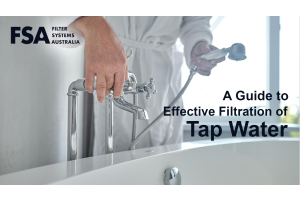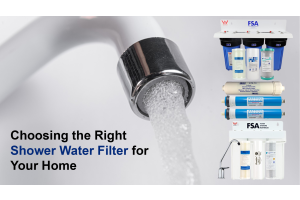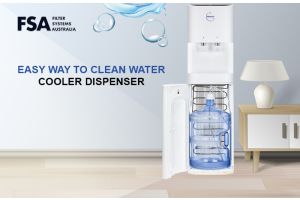
Access to clean and safe drinking water is a fundamental human right, and in many parts of the world, tap water serves as a primary source for fulfilling this need. Concerns about contaminants and impurities in tap water have led us to seek ways to improve its quality. Filtration is widely accepted, effective method to reduce and remove impurities from tap water, to ensure health and safety standards.
Different regions may have different water quality issues, it is crucial to identify the specific contaminants (e.g. bacteria, viruses, sediment, chlorine, heavy metals, pesticides etc.) in one’s local water supply to understand their filtration needs.
Filtration Methods:
1. Activated Carbon Filters:
Activated carbon filters are effective in removing chlorine, sediment, volatile organic compounds (VOCs), and unpleasant odours and tastes. These filters work by adsorption, where impurities adhere to the carbon surface.
2. Reverse Osmosis (RO) Systems:
They are highly efficient, widely accepted range of systems. RO systems are highly efficient in removing a wide range of contaminants, including bacteria, viruses, heavy metals, and dissolved salts. These systems use a semipermeable membrane to separate impurities from water, producing purified water on one side and concentrating impurities on the other.
3. UV Purifiers:
UV or ultraviolet purifiers use UV light to inactivate and destroy bacteria, viruses, and other microorganisms in the water. This method is not effective against non-living contaminants, UV purifiers provide an additional layer of protection against harmful pathogens.
4. Ceramic Filters:
Ceramic filters are effective in removing sediment, bacteria, and some larger particles. These filters typically have microscopic pores that trap impurities while allowing water to pass through.
Installation Types of Water Filter
Selecting the appropriate installation type for a water filter is a crucial step in ensuring that the chosen system meets the specific needs of your household. Each installation type has its advantages and considerations, catering to various preferences, water usage patterns, and filtration requirements.
1. Pitcher Water Filter:
- Water is filled in pitcher and can be kept in refrigerator.
- Ideal for households with relatively low water consumption.
- Do not require any plumbing modifications, easy to install.
- Portable
2. Faucet Mounted Filter:
- Faucet-mounted filters are designed to filter all the water that comes out of the tap.
- Ensures both drinking and cooking water are filtered.
- They can however, slow down flow rate.
3. On- Counter or Under Sink Water Filter:
- Require plumbing modifications for installation.
- More permanent and integrated solution.
- Long lasting
4. Whole- House Water Filter:
- Treat all the water entering the house.
- Comprehensive solution for households dealing with severe water contamination issues.
- Requires professional installation
Ultimately, the choice of installation type depends on factors such as water usage, maintenance preferences, filtration needs, and the severity of water contamination.
Factors To Be Considered While Choosing the Right Filtration System:
1. Water Quality Analysis:
Conduct a water quality analysis to identify specific contaminants in your tap water. This information will guide you in choosing a filtration system tailored to your needs.
2. Flow Rate and Capacity:
This is done to ensure that flow rates meet the demand of the household. Some systems may have a slower flow rate but offer more comprehensive filtration.4
3. Maintenance and Cost:
Some systems require frequent filter replacement, some may have higher initial investment but lower maintenance and last longer.
4. Environmental Impact:
Consider the environmental impact of the filtration system, including the disposal of filter cartridges. Opt for systems that are eco-friendly and promote sustainability.
Conclusion:
Filtering tap water is a proactive and effective measure to ensure access to clean and safe drinking water. By understanding the common contaminants and selecting an appropriate filtration method based on water quality analysis and individual needs, individuals can take control of their water quality. Whether it's through activated carbon filters, reverse osmosis systems, UV purifiers, or ceramic filters, the goal is to provide households with a reliable and efficient means of obtaining high-quality tap water. In doing so, we contribute to the well-being of our communities and safeguard a precious resource that is essential for life.



